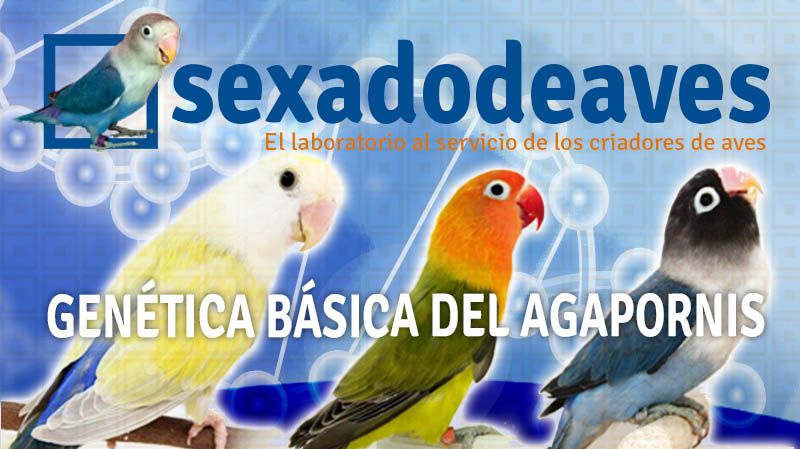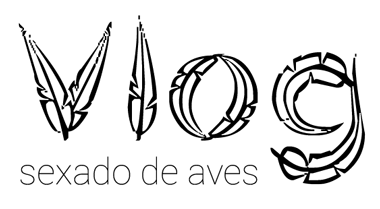Lovebirds genetics (part I)
To begin, we should clarify that all the mutations are found in the pairs of chromosomes (represented in this image) and are transmitted through three types of inheritance that will be studied in this article. AUTOSOMAL

To begin, we should clarify that all the mutations are found in the pairs of chromosomes (represented in this image) and are transmitted through three types of inheritance that will be studied in this article.
AUTOSOMAL DOMINANT: Dark factors, Violet and Pied.
As these three mutations are dominant, they will only need to be present in one of the chromosomes of the pair to be visible.
AUTOSOMAL RECESIVE: Turquoise, Aqua, Orangefaced and Marbled.
Being recessive mutations, they need to be present in both chromosomes of the pair in order to be visible. Nevertheless, if these mutations are found in only one chromosome we would be talking of “split”. We will talk about this concept later. In addition of these four mutations that I already said, the Peachfaced lovebirds (roseicollis) can also present the mutations Pale, Fallow and Recessive Pied, although they are not very common. In the case of the eye-rings lovebirds, we can find Pastel and Ino mutations.
SEX LINKED RECESSIVE: Opaline, Ino, Pallid and Cinnamon.
These recessive mutations are more complex than the others as they will act differently in males and females. That is why they are known as “sex-linked mutations”. One of the sexual chromosomes of the females are not able to store genetic information about the mutations, that is why in case of the sex-linked mutations the females will only use one chromosome instead of both. This inheritance is found in Roseicollis lovebirds. Nevertheless lately we have also seen some sex-linked mutations in eye-rings lovebirds, but it is not very common.
Mechanism of inheritance.
When two specimens breed, the resulting offspring will take one chromosome from the father and another from the mother. That is why there are four different options.
In the image we can see how chromosome A from one of the parents combines with the C and D of the other parent and then chromosome B does the same.
Those are the four possible combinations that will come up with different results that will depend on the kind of inheritance: dominant, recessive or sex linked.
Dominants.
It would be very easy to say that these mutations are always transmitted to the offspring if one of the parents shows the mutation. Although this is true, sometimes we cannot know it for sure with the naked eye.
Amateur breeders find it difficult to understand the terms SF and DF, but it is not so complicated. Just think about the image of the pairs of chromosomes: SF is the one that carries the mutation in one chromosome and DF the one that carries the mutation in both chromosomes of the pair.
As I already said, there are always four possible results. To avoid making this article endless, we will see the result of the combination of two SF specimens.
In this example we can see the result: 25% of the specimens would be DF, 50% would be DF and the rest 25% will not carry the mutation.
According to what we have learnt in the “inheritance mechanism” we can practise with other combinations as of a DF with a SF, etc.
Remarks on dominant mutations.
• A bird cannot be split to any dominant gene, which is why a specimen that does not have the mutation will not transmit the mutation although one of its parents does have the mutation. • A DF specimen will have mutated descendants, although those descendants are only SF. For example, a DD will always produce at least a D, even if we are not able to see it. • Talking about the Dark Factors it is very common to use a D for SF specimens and DD for DF ones. • When I said that the naked eye can fool us I mean that just by look at a Dominant pied you cannot tell if it is a SF or DF. Also, we cannot notice if a specimen has a Dark Factor or not. • Pied is a dominant mutation so the descendants will always be Pied even if the other parent is not. If the specimen is SF 50% of the descendants will be Pied and if it is a DF 100% of the descendants will be Pied. • If both parents are Pied SF, some of the offspring might not have this mutation. • Actually, the only real dominant mutation is Pied, because there are not any visual differences between a SF and a DF specimen. The other two: Dark Factor and Violet are incomplete dominants because a DF can be very different from a SF because the mutation is not fully present in the pair of chromosomes.
Juan A. García. “Agapornis La Isla”.
Do you find this article interesting? If you want to learn more about this topic, you can read our article about Lovebird genetics – Recessive mutations. (click here)

/Agapornis: Gené/MUTACION-AGA-ES.jpg)
/Agapornis: Gené/Agapornis- Genética Básica (Parte I).jpg)
/Agapornis: Gené/Agapornis- Genética Básica .jpg)
/Agapornis: Gené/Agapornis- Genética .jpg)

Dr. M. Suhaib Khan khakwani November 9, 2019
M a new commer in this field
Later on I will be able to give comments
Raza January 26, 2020
I am already subscribed.and i want to know how should i can send the samples of feathers to know about the sex gender but from ur side i have no response.are u sending some forms to fill or should i send samples in plastic bags and u will send me the result by post or by e-mail?
Dadan Priatna June 12, 2021
I am blown away by this article.
raghu rao April 19, 2020
peach faced lutino mutation paird with peach faced pied mutation will produce what kind of color mutation in chicks?
Eden August 5, 2020
Mostly pied
Daniyal November 4, 2020
If you pair a Lutino male with a Pied female then all male chicks will be normal green split pied and Lutino
All Female chicks will be visual lutinos split to pied .
aditya November 21, 2020
pied lutino
Nouman December 23, 2020
BLUE MASK PAIRED WITH VOILET WAHT MUTATION WE WILL AFTER RESULT
Dadan Priatna June 12, 2021
I was greatly helped by this article. thank you
Sexado de Aves June 12, 2021
Thanks for reading!!
saju June 27, 2022
what if i paired aqua opaline male and lutino female